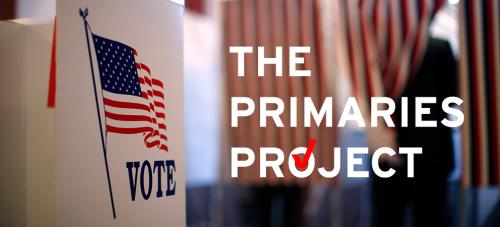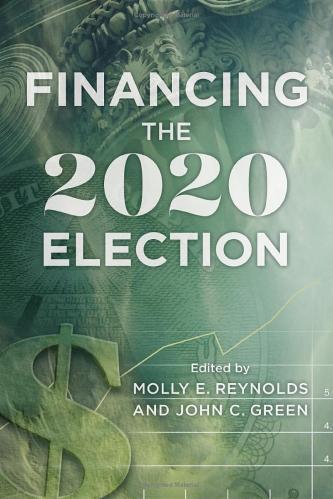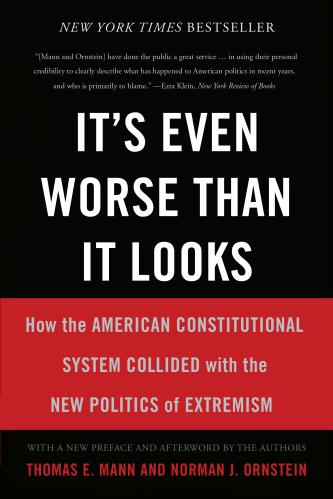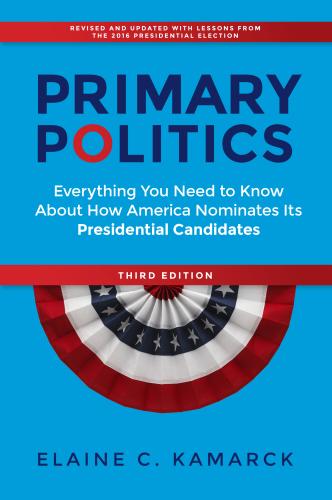Editor’s Note: This blog post is part of The Primaries Project series, where veteran political journalists Jill Lawrence and Walter Shapiro, along with scholars in Governance Studies, examine the congressional primaries and ask what they reveal about the future of each political party and the future of American politics.
Even though they have come to dominate political campaigns, Super PACs and their shadowy counterparts are barely old enough to qualify for pre-kindergarten. Since these big-bucks independent groups have only been legal since 2010, we are still groping to understand the long-term role that Super PACs are apt to play in congressional politics—especially primaries.
With the demonization of the Koch Brothers by the Democrats and the attacks on liberal givers like Tom Steyer from the right, it is easy to assume that Super PAC donors are ideologues. Scorched-earth contests like the Mississippi Republican Senate primary further fuel this impression. Thad Cochran versus Chris McDaniel could be viewed as a proxy war between the GOP establishment (personified by Karl Rove’s Super PAC American Crossroads) and the Tea Party (working through groups like Club for Growth Action).
But there is another very important, but far less publicized, role that Super PACs are playing in this year’s congressional primaries. And when the internecine warfare in the Republican Party dies down, this type of Super PAC involvement in party primaries may become the norm.
Two recent GOP House primaries in winnable districts in New York illustrate this alternative model. In both cases, Super PACs took on the role—once left to the political parties—of vetting the candidates. Super PAC donors and their campaign consultants made their own decisions about who is electable and who has the right political pedigree. And in these New York primary contests without any clear ideological markers, heavy spending by Super PACs made all the difference.
Twenty-nine-year-old Elise Stefanik was a major beneficiary of Super PAC spending in her primary in New York’s rural 21st District that runs from the Saratoga racetrack to the Canadian border. Stefanik has never run for public office before, but she boasts all of the right credentials to appeal to Washington Republican politicos. Even though she calls herself a “small businesswoman” in her TV ads, Stefanik served on the White House domestic policy staff under George W. Bush and was in charge of 2012 debate preparation for Paul Ryan.
Small wonder that American Crossroads and Karl Rove invested heavily in Stefanik’s primary race, spending $772,000 in attack ads excoriating her GOP rival, Matt Doheny. This was, by the way, the only House primary in the nation in which American Crossroads has made a significant investment to distinguish between Republicans. And the Super PAC’s involvement was certainly not motivated by ideology. As the Watertown Daily Times put it on the eve of the Stefanik-Doheny primary, “It’s difficult to point to a single issue on which a big divide exists between the two.”
Yes, Doheny—a largely self-funding investment banker who had lost two prior races for the House—was a flawed Republican candidate. And Stefanik was the embodiment of the kind of message discipline beloved by campaign consultants. But it is hard to believe that electability alone prompted attack ads with tag lines like: “Matt Doheny—it would be a big mistake to send him to Congress.”
American Crossroads, which spent more than either the Stefanik or Doheny campaigns, prevailed in the June 24th primary. Stefanik romped home with 61 percent of the primary vote.
The same pattern emerged in the Republican primary in New York’s 1st District on the tip of Long Island. The major player this time was the US Jobs Council, which is heavily funded by hedge-fund mogul Robert Mercer, whose home is in the district. As Mother Jones reported in an article by Molly Redden, Mercer’s Ahab-like obsession has been defeating Democratic incumbent Tim Bishop ever since the congressman voted for the Dodd-Frank financial reform legislation.
Both candidates in the Republican primary to oppose Bishop had their weaknesses in appealing to a conservative electorate. State Senator Lee Zeldin carried the burden of votes in Albany that could be interpreted as raising taxes. George Demos, a former SEC lawyer, was heavily supported by his wife’s in-laws who, in normal times, are liberal California Democrats.
In truth, there were scant philosophical differences between the two conservative Republicans. Newsday columnist Lane Filler wrote, “Both oppose abortion, think taxes are too high, support gun rights, hate Common Core, favor a strong national defense, are against ‘amnesty’ for immigrants here illegally…I have not turned up any meaningful difference between them on policy.”
But that didn’t prevent the US Jobs Council from spending more than $200,000 on attack ads that portrayed Demos, who had been endorsed by Rudy Giuliani and George Pataki, as a creature of “Nancy Pelosi’s people.” A typical ad charged that Demos “is trying to use the Pelosi cash machine to buy a seat in Congress.”
Even though Demos donated $2 million to his own campaign, it was not enough to hold off the onslaught of Super PAC attacks. In the end, Zeldin defeated Demos in the primary by a 62-to-38 percent margin.
Politico reporter Ken Vogel in his praiseworthy new book, Big Money, likens Super PAC donors to meddlesome “sports junkies who plunk down hundreds of millions of dollars to buy a professional team.” Often the motivation of these mega-givers is the arrogant belief that because they are rich, they know more about politics than the pros. With it comes the certainty that they can pick winners and losers in primaries just like they do with stocks on Wall Street.
And that is why the heavy Super PAC influence in these two little-covered New York House primaries may represent the wave of the future in party politics.







Commentary
Super PACs: The Nominating Committees of the Future
July 23, 2014